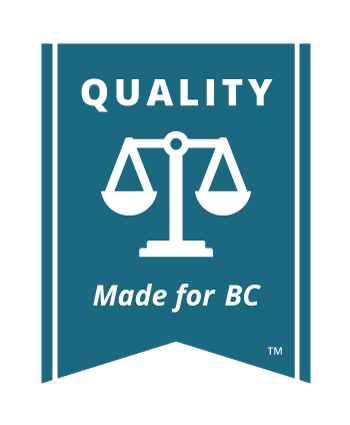Application Hearing
A large part of preparing for an application is preparing the evidence that will be considered by the judge or associate judge in deciding whether to grant the order requested in the application. All the evidence in chambers is presented to the Court by affidavit. See Affidavits.
One of the most useful things you can do to prepare is to spend some time watching chambers hearings so you understand how applications are presented in court. In Vancouver and Victoria, chambers hearings are held every day or on set days throughout the week. At other courthouses they may be less frequent. You can contact the registry to find out when chambers hearings are scheduled in your location. Courtrooms, while in session, are open to the public and you are welcome to attend to observe the proceedings.
Appearance List
In certain applications, the Court requires that the party prepare an Appearance List. This is a sheet which sets out the name of each party and their counsel. The names should be in the same order as they are listed in the style of proceeding (also known as style of cause). If possible an appearance list is to be typed.
Making an appearance list is generally a good idea, and it is required in certain situations, including where there are three or more parties, or six or more lawyers.

Learn More
For more information on Appearance Lists, see Practice Direction 44 – Requirement for Appearance
At the Hearing
At the chambers hearing, both parties will have an opportunity to present their cases to the judge or associate judge. Do not interrupt the other side. You will have your opportunity to speak.
Steps in presenting your case:
- The applicant will speak first and explain their position
- The person or persons responding will then explain their position
- The applicant may then have the last word, a chance to “reply” to what the respondents have said
When you are orally presenting your position on an application to the Court, the following general principles may assist your presentation:
- For each issue, tell the Court what order you are seeking
- Outline the facts necessary to support your application
- Set out the law on the subject
- Explain how the law applies to the facts of your case
- Indicate that the application of the law to the facts of your case requires the Court to issue the order requested
- Try not to switch back and forth between facts and law
The judge or associate judge normally gives judgment right away. However, in some cases where the issues are complex, judgment may be reserved (delayed) and provided in writing at a later date.
Stand when you are making your presentation to the judge. A justice should be addressed as “Justice”, “Mister Justice” or “Madam Justice.” If you are appearing before a associate judge, address both male and female associate judges as “Your Honour.” Court clerks are addressed as “Mr. or Madam Registrar.”
For more information on what to expect and what to do in court see At Court.
After the Hearing
When the hearing has completed and the Court has made an order, the order needs to be prepared. The order is the document that is signed and entered with the Court and sets out the decision of the judge or associate judge. Review Rule 13-1 for more detailed information about preparing your order. For more information on preparing a court order, see Orders.

Read the Rules
Rule 13-1 Orders
Orders After Applications
You may make an application to court to ask for an order to resolve issues that come up before the trial of your case. These kinds of applications are generally called “chambers proceedings” and they do not result in a final decision of your case.
For example, you might want to make an application in chambers to get an order for the other party to produce certain documents for you to inspect.
The parties, not the judge or associate judge, are responsible for preparing the written order and getting it signed by the judge or associate judge, as well as by the parties who appeared at the hearing.
You can do this in one of three ways:
- You can prepare a draft order (Form 35) before the hearing, setting out the terms of the order that you are asking the court to make
Before the hearing, take the order to the registry to be “vetted”. This means that the registry staff will have a look at it to make sure it is in the proper form. The registry staff will make a note on the order that it has been vetted.
If you are successful in your application to court, you can ask the judge or associate judge who heard the application to sign the order. The court clerk will hand up the order to the judge or associate judge and, if it is accurate and has been vetted, the judge or associate judge will sign it at that time. In these situations, you don’t need to get the other parties to sign your draft order.
- If you don’t have a draft order in Form 35, but the court orders what you were asking for in your application, show the judge or associate judge where your application asks for that order
In some cases the judge or associate judge may initial your application (Rule 13-1(4)). You can file that initialed document in the court registry and it has the same effect as a formal court order. This saves you the steps of drafting the order and getting signatures from the other parties.
- If the judge or associate judge does not sign the order in chambers, one of the parties must draft the order (Form 35). Any party can draft the order. Usually the party who won the application will draft the order, but if one party has a lawyer, that lawyer might agree to draft the order. In some cases the court might rely on Rule 13-1(15) and ask the registry to draft the order
As a final step, you file the signed order in the court registry.
The process of the registry filing the order may take some time. This is because the registry staff have to check the order you submitted as against the notes of the court clerk.

Find the Form
Form 35 Order made after application







 JusticeEducation.ca
JusticeEducation.ca JusticeEd
JusticeEd /JusticeEducation
/JusticeEducation